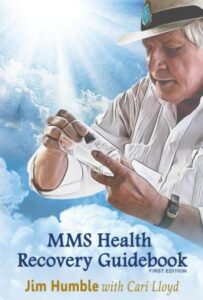Be Afraid?: Ads for Tamiflu Prey on Flu Fears, But Cure May Be Worse Than the Disease
Drugmaker Roche pushes its Tamiflu drug using fear tactics, but research shows the drug may be linked renal disorders, high blood sugar, psychiatric disorders and heart rhythm disturbances.
It’s been more than 20 years since Tamiflu, the first orally active neuraminidase inhibitor to prevent and treat influenza A and B, was rolled out by drugmaker Roche.
Not a flu vaccine, Tamiflu (oseltamivir) blocks the flu virus’s neuraminidase protein. The medication is available only by prescription and is often prescribed for people at high risk of flu complications. Ads for Tamiflu Prey on Flu Fears
As the world navigated bird flu (H5N1) in 2005, followed by swine flu only four years later, fear of pandemics rose rapidly. The World Health Organization (WHO) was even forced to rename swine flu as “H1N1,” as the public feared eating pork, and countries began banning imports from the United States, Mexico and elsewhere.
 Swiss-based Roche was already well positioned in the influenza “space,” as drug marketers call it.
Swiss-based Roche was already well positioned in the influenza “space,” as drug marketers call it.
First, the company, whose biotech arm is Genentech, hired the marketing and communications firm Young & Rubicam (now called VMLY&R) for an educational campaign about flu as early as 2000.
Then, in 2006, Roche hired the advertising agency GSW Worldwide for a Tamiflu media blitz, despite industry voices cautioning against fearmongering about a “pandemic,” which could provoke panic and hoarding of resources, PharmaExec reported.
According to a 2013 article about Tamiflu in The Atlantic, a major danger of flu season is panicky patients rushing to emergency rooms even though they aren’t sick enough to need hospitalization. Ads for Tamiflu Prey on Flu Fears
“When emergency rooms are crowded, death rates among people who really need immediate care go up,” the article reads. “Not only are patients with minor flu-like symptoms exposing themselves to a load of other bugs when they rush to the ER, they’re potentially standing between some other patient and lifesaving treatment.”
Tamiflu’s effectiveness and safety challenged
Claims of Tamiflu’s effectiveness were challenged early in the scientific literature, according to a review study titled “Effectiveness of Oseltamivir in Adults: A Meta-Analysis of Published and Unpublished Clinical Trials,” published in the journal Family Practice in 2012.
“Two large unpublished studies in the elderly and in adults with chronic disease did not find a significant reduction in the symptom duration,” the researchers wrote.
The researchers continued: “There is no evidence that oseltamivir reduces the likelihood of hospitalization, pneumonia, or the combined outcome of pneumonia, otitis media [inflammation of the inner ear], and sinusitis in the ITT [intention-to-treat] population.”
Soon afterward, in a scathing report, the Cochrane Collaboration, a nonprofit group that reviews medical treatments, reported that renal disorders, high blood sugar, psychiatric disorders and heart rhythm disturbances may be related to Tamiflu use.
The BMJ and Cochrane then issued a statement charging that Tamiflu and Relenza (an inhaled form of the same drug) had had their “effectiveness overplayed, and harms underplayed.”
The BMJ and Cochrane were unable to obtain the clinical trial data on which Roche’s Tamiflu claims were based for a five-year period, Nature reported. In 2017, the WHO downgraded the status of Tamiflu to “complementary.”
More side effects surfaced
In addition to the Cochrane review, post-marketing studies documented additional side effects such as allergic and anaphylactic reactions, rashes including the deadly toxic epidermal necrolysis, and aggravation of diabetes.
By 2006, Tamiflu was also linked to neurological and psychiatric side effects and suicide.
“The European Medicines Agency has described two deaths, both attributed to suicide, in adolescents aged 14 and 17 who were taking oseltamivir,” the European journal Prescrire International reported.
Prescrire continued: “According to the U.S. Food and Drug Administration, neuropsychiatric disorders were reported in 32 children (mainly in Japan), and include delirium, behavioral disorders, hallucinations, convulsions, and confusion.”
The IndyStar reported that the family of an Indiana teen who took his own life in 2018 blamed Tamiflu and also in 2018, a 6-year-old Texan girl tried to jump out a window while on the drug.
The Prescrire authors also cited “disturbing neurological toxicity” in young rats exposed to Tamiflu and noted that American and European agencies “warn against the use of oseltamivir in infants less than one year old.”
Since Tamiflu is only modestly effective in preventing or treating flu, “the possibility of serious adverse effects should be weighed against the limited benefit of oseltamivir,” the authors concluded.
Researchers writing in the journal Acta Neurologica Scandinavica in 2017 added more doubts about the drug’s safety.
“It is known that oseltamivir inhibits nicotinic acetylcholine receptors, which are closely related to hypothermia,” they wrote. Other receptors may be “related to respiratory suppression followed by sudden death and psychotic reactions,” which have been seen with Tamiflu.
Flu-like symptoms caused by drug
Tamiflu also was seen to cause the very flu symptoms it was supposed to prevent or mitigate.
In 2009, of 273 students and 53 staff given Tamiflu at a primary school in Sheffield, U.K., 41% of the students and 47% of the staff reported adverse effects such as cough, fever, headache, sore throat and nausea, according to the journal Eurosurveillance. Fourteen percent of the students and 20% of the staff discontinued the drug because of the effects.
Parallels between COVID-19 pandemic and Tamiflu marketing
Like COVID-19, influenza viruses continue to mutate, making vaccines less effective and raising the anxiety of patients, caregivers and public health officials.
There’s also a worry in some circles that the vaccines themselves could influence virus mutations. The same is true of Tamiflu.
Notably, the CDC reported that Tamiflu created mutations as H1N1 flu became resistant to the widely used drug.
As the 2022–2023 flu season begins, Tamiflu is still in the news. A September study in the Journal of the American Medical Association, widely circulated by medical news sites, found early administration of Tamiflu to children hospitalized with influenza resulted in better outcomes.
Healthline, a major health site, notes, however, that the drug can cost $100 without insurance, may be ineffective for some flu strains and may cause “hallucinations, confusion, convulsions, [and] other neurologic or psychiatric issues.”
Yes, Tamiflu is still in the news and in use, but its safety and effectiveness questions are far from resolved. Ref: The Epoch Times.
Disappearing Flu Data: RFK, Jr. Brings Together 5 Experts to Discuss Changes in How Health Officials Calculate All-Cause Mortality
In a recent episode of “RFK Jr. The Defender Podcast,” Robert F. Kennedy, Jr., invited four experts to comment on a theory, proposed by Jonathan Jay Couey, Ph.D., that public health officials in 2020 changed how they calculate all-cause mortality statistics to make flu deaths look like deaths from COVID-19.
 In a recent episode of “RFK Jr. The Defender Podcast,” Jonathan Jay Couey, Ph.D. — an independent consulting biologist, content creator and former research assistant professor at the University of Pittsburgh School of Medicine — outlined his theory on how, sometime in 2020, public health agencies changed the way they calculate all-cause mortality statistics so that what used to be considered a “vaccine-preventable” flu death is now counted as a “vaccine-preventable” death from COVID-19.
In a recent episode of “RFK Jr. The Defender Podcast,” Jonathan Jay Couey, Ph.D. — an independent consulting biologist, content creator and former research assistant professor at the University of Pittsburgh School of Medicine — outlined his theory on how, sometime in 2020, public health agencies changed the way they calculate all-cause mortality statistics so that what used to be considered a “vaccine-preventable” flu death is now counted as a “vaccine-preventable” death from COVID-19.
Couey, who co-founded D.R.A.S.T.I.C. Research, a group of international independent scientists who publish academic papers on the COVID-19 pandemic, presented his theory to four experts, who took turns commenting on his hypothesis.
According to Couey, the World Health Organization, in declaring the COVID-19 pandemic to be a pandemic of a dangerous virus, was able to “convert a large percentage of all-cause mortality into a national security priority of vaccine-preventable deaths.”
The podcast features Couey’s presentation plus comments from four experts (in alphabetical order):
- Dr. Tess Lawrie, CEO of Evidence-Based Medicine Consultancy Ltd. in the U.K., who sits on the steering committee of the World Council for Health.
- Dr. Robert Malone, who helped develop the mRNA technology used in COVID-19 vaccines.
- Dr. Meryl Nass, an expert in epidemics and bioterrorism, who is a scientific advisory board member of Children’s Health Defense.
- Jessica Rose, Ph.D., a molecular biologist in Canada who trained in biostatistics. Ref: Suzanne Burdick, Ph.D.





